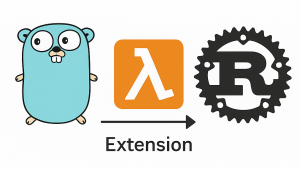Modern applications have become increasingly complex, featuring interconnected services and diverse components, including serverless functions, databases, AI models, and more. Traditional monitoring tools often struggle to deliver the unified visibility required to diagnose and resolve issues swiftly, resulting in increased downtime and business impact.
The lack of a holistic view of various services/components in transactions hinders quick identification and resolution of root causes, leading to extended downtime and lost revenue. To monitor these components, you often need to switch between multiple dashboards, which slows down troubleshooting and increases MTTD/R, leading to longer downtime and revenue loss.
New Relic’s Transaction 360—now generally available—is the industry's first transaction-centric observability solution designed to streamline and accelerate troubleshooting for business-critical transactions. By automatically correlating relevant components (such as APM, Browser, and Infrastructure), telemetry, and crucial data like alerts and change trackers related to problematic transactions, Transaction 360 aggregates everything you need to know into a unified view. By combining transaction tracing and distributed tracing, it offers a complete, unsampled picture of issue-specific data. This consolidated, context-rich view significantly reduces data overload for ITIOps, including SRE, Platform engineering and DevOps teams, enabling rapid issue resolution without the need to switch between tabs or tools.
With just a single click,Transaction 360 gives you unified transaction-centric observability, combining all monitoring elements across different environments and data types, offering unparalleled data correlation for instant insights and enabling you to solve issues faster and achieve superior system performance:
- Correlated observability: Transaction 360 provides a comprehensive “east-to-west” view showing all of the services in a modern application architecture that are involved in a transaction’s journey—automatically, without any additional instrumentation.
- Reduce data overload: Automatically aggregate entities and telemetry for problematic transactions, reducing data overload and the time needed to identify issues.
- View and analyze related changes in context: Quickly understand the impact of recent deployments and configuration changes by viewing aggregated changes across relevant entities.
- Accelerate troubleshooting: Obtain a comprehensive, full-stack, cross-trace view of critical digital transactions, eliminating context switching and speeding up troubleshooting.
- Proactively prevent issues: Automatically detect and address potential issues using advanced AI-powered anomaly detection for critical digital transactions.
Automatic Dynamic Workload Creation: Reducing Data Overload
Developers and DevOps teams often face data overload when critical incidents arise, wasting valuable time navigating fragmented dashboards. Transaction 360 automatically aggregates entities, telemetry, alerts, and relevant changes associated with problematic transactions into one unified dynamic workload view. This approach reduces complexity and accelerates the identification of issues.
How we do it:
When an incident occurs, Transaction 360 immediately compiles all related telemetry and entities—from infrastructure to browser-level interactions—creating a consolidated view that eliminates the need to switch between multiple dashboards.
Aggregate Workload Change View: Analyze Deployments in Context
Isolating the impact of deployments and configuration changes across numerous interconnected services can be a time-consuming process. Transaction 360 provides an aggregated view of recent changes across all relevant entities, enabling teams to understand how these alterations impact overall transaction performance quickly.
Practical example:
If your checkout transaction suddenly slows down after a deployment, Transaction 360 pinpoints exactly which services were impacted by recent changes, enabling faster rollback or fixes.
Comprehensive Trace Flow Map: Full-Stack, Cross-Service Observability
Existing observability solutions often offer only partial snapshots or limited timeframes for troubleshooting transaction issues. Transaction 360 leverages combined distributed tracing (DT) and transaction tracing data to present a comprehensive and unsampled flow map. This full-stack visibility spans more extended historical periods—days or even weeks—rather than the typical limited windows (15-minute snapshots) offered by competitors.
Impact:
This comprehensive historical view enables teams to quickly identify when issues started, significantly accelerating root-cause analysis and reducing downtime.
AI-Powered Anomaly Detection and Proactive Alerts
Manual monitoring of complex transactions is impractical, leading to reactive rather than proactive responses. Transaction 360 incorporates advanced, AI-powered anomaly detection to identify potential issues before they escalate automatically. Automated alerts ensure rapid team engagement, dramatically reducing the mean time to detect and respond (MTTD/R).
Result:
Your team can proactively maintain performance stability, safeguarding user experience and revenue continuity.
Part 3: Getting Started
Getting started with Transaction 360 is straightforward:
Step 1: Enable Distributed Tracing
- Navigate to your New Relic account settings and enable distributed tracing, which is required to leverage Transaction 360's capabilities.
Step 2: Access Transaction 360 View
- Log into New Relic One.
- Go to APM and Services > Transactions > Transaction Details > View transaction 360 workload.
Step 3: Explore and Analyze
- Utilize the dynamic flow map for an intuitive visualization of transaction paths.
- Investigate participating entities, performance metrics, and infrastructure insights within the comprehensive Transaction 360 dashboard.
For more detailed guidance, explore the Transaction 360 Documentation.
Next steps
Transaction 360 is now generally available as part of New Relic Advanced Compute, giving you full access to our suite of intelligent observability innovations with usage-based pricing—no license swaps needed. You only pay for what you use, with built-in cost controls such as Feature Control Manager and Compute Budgets to manage observability spend, plus full platform access for all users. Learn more here.
The views expressed on this blog are those of the author and do not necessarily reflect the views of New Relic. Any solutions offered by the author are environment-specific and not part of the commercial solutions or support offered by New Relic. Please join us exclusively at the Explorers Hub (discuss.newrelic.com) for questions and support related to this blog post. This blog may contain links to content on third-party sites. By providing such links, New Relic does not adopt, guarantee, approve or endorse the information, views or products available on such sites.



